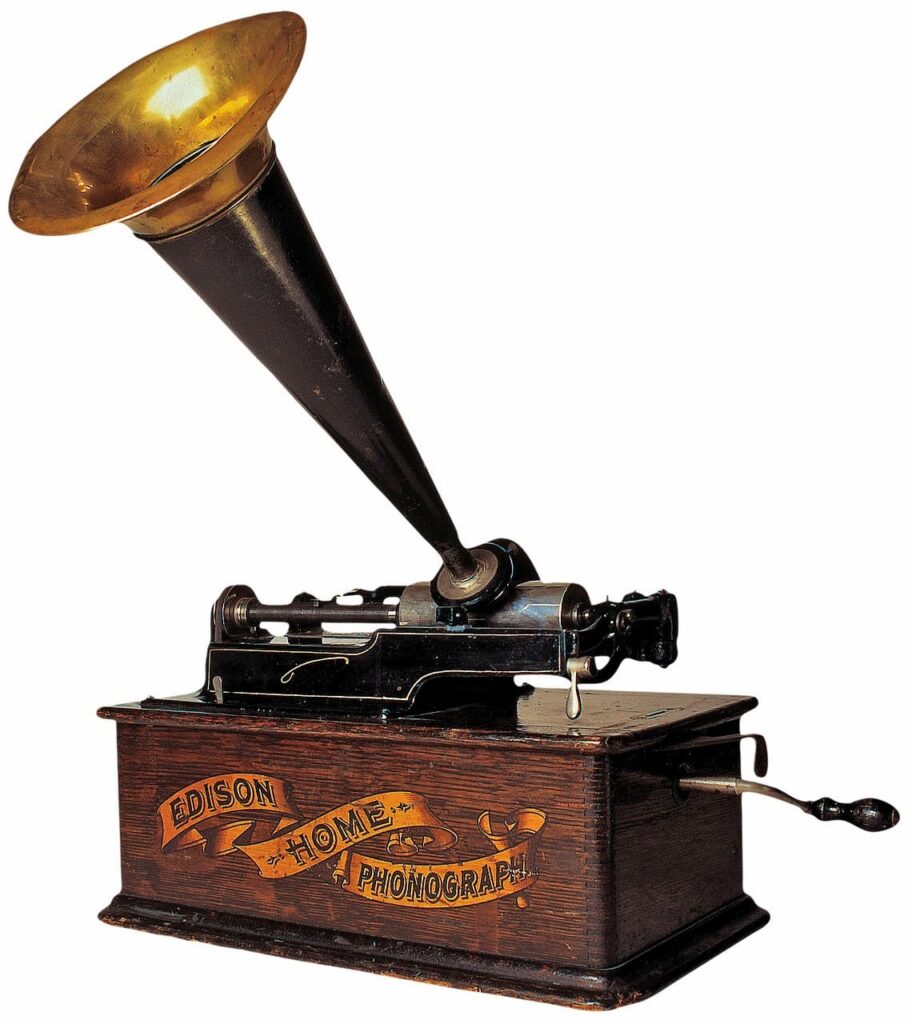Music is a universal language that transcends boundaries and connects people across the globe. Its recording, preservation, and dissemination have witnessed a remarkable evolution. From the early days of Edison’s phonograph to the digital age of streaming services, recording technology has continually transformed how we create, consume, and appreciate music. In this article, we’ll take a journey through time to explore the milestones and innovations that have shaped the world of music recording.
The Birth of Sound Recording
Phonograph: Edison’s Ingenious Invention
The story of recorded music begins in the late 19th century with Thomas Edison’s groundbreaking invention – the phonograph. In 1877, Edison introduced this mechanical marvel that could capture and reproduce sound. It worked by etching grooves onto a rotating cylinder, which could then be played back using a stylus. For the first time in history, the phonograph allowed the preservation of live musical performances, speeches, and even everyday sounds.
As sound recording technology advanced, it paved the way for diverse entertainment experiences. Today, you can explore a range of entertainment options on https://play-fortune.pl, offering a variety of interactive and engaging experiences.
Shellac Records and Gramophones
The early 20th century saw the emergence of shellac records and gramophones, which quickly replaced the bulky and fragile phonograph cylinders. Shellac records, made from a mixture of shellac resin and other materials, offered a more durable and consistent medium for music playback. The gramophone, a hand-cranked device, became a household staple, making recorded music accessible to a wider audience.
The Vinyl Era
The 1940s brought a significant technological advancement with the introduction of the long play (LP) record. These 33 1/3 RPM vinyl records could hold up to 25 minutes of music per side, compared to the shorter durations of earlier formats. LPs became the standard for album releases, allowing artists to create cohesive bodies of work. Simultaneously, the 45 RPM single became popular for individual song releases. These smaller records spun faster and featured a single track on each side, making them ideal for hit songs and radio play. The 45 RPM single format became a staple in the music industry for decades.
The Digital Revolution
The 1980s marked a pivotal moment in music recording technology with the advent of compact discs (CDs). These digital optical discs replaced analog formats like vinyl and cassette tapes. CDs offered superior audio quality, durability, and the ability to skip tracks easily. They revolutionized how music was stored and played, eventually leading to the decline of physical formats like vinyl. The late 20th century brought another seismic shift with the rise of Digital Audio Workstations (DAWs). These software applications allowed musicians to record, edit, and produce music entirely in the digital realm. DAWs offered unprecedented flexibility and control, empowering artists to experiment with new sounds and techniques.

The Streaming Era
As the internet became ubiquitous, the music industry experienced a paradigm shift with the popularity of MP3s and online music stores like iTunes. This allowed consumers to purchase and download individual songs, changing how people acquired and consumed music. However, it was in the mid-2000s that streaming services began to dominate the landscape. Today, streaming services like Spotify, Apple Music, and YouTube have become the primary way people access music. With vast libraries of songs available at the tap of a screen, music lovers can effortlessly explore a world of genres and artists. The convenience of streaming has reshaped the music industry’s revenue model, emphasizing subscription services over physical sales.
The Future of Music Recording
As we look ahead, the future of music recording technology promises even more innovation. High-definition audio formats, virtual reality experiences, and AI-driven music production are just a few areas where technology pushes the boundaries of what’s possible. The dynamic nature of the music industry ensures that it will continue to evolve, adapt, and surprise us.
In conclusion, the evolution of music recording technology has been remarkable, from Edison’s phonograph to the digital streaming era. Each era brought new possibilities, reshaping how we create, share, and experience music. As technology advances, the future of music recording holds exciting opportunities, ensuring that music remains a vibrant and integral part of our lives.
For those looking for a variety of entertainment on the Internet, it’s worth checking out the offerings at https://play-fortune.pl/gry-hazardowe, which includes a wide range of free gambling games.